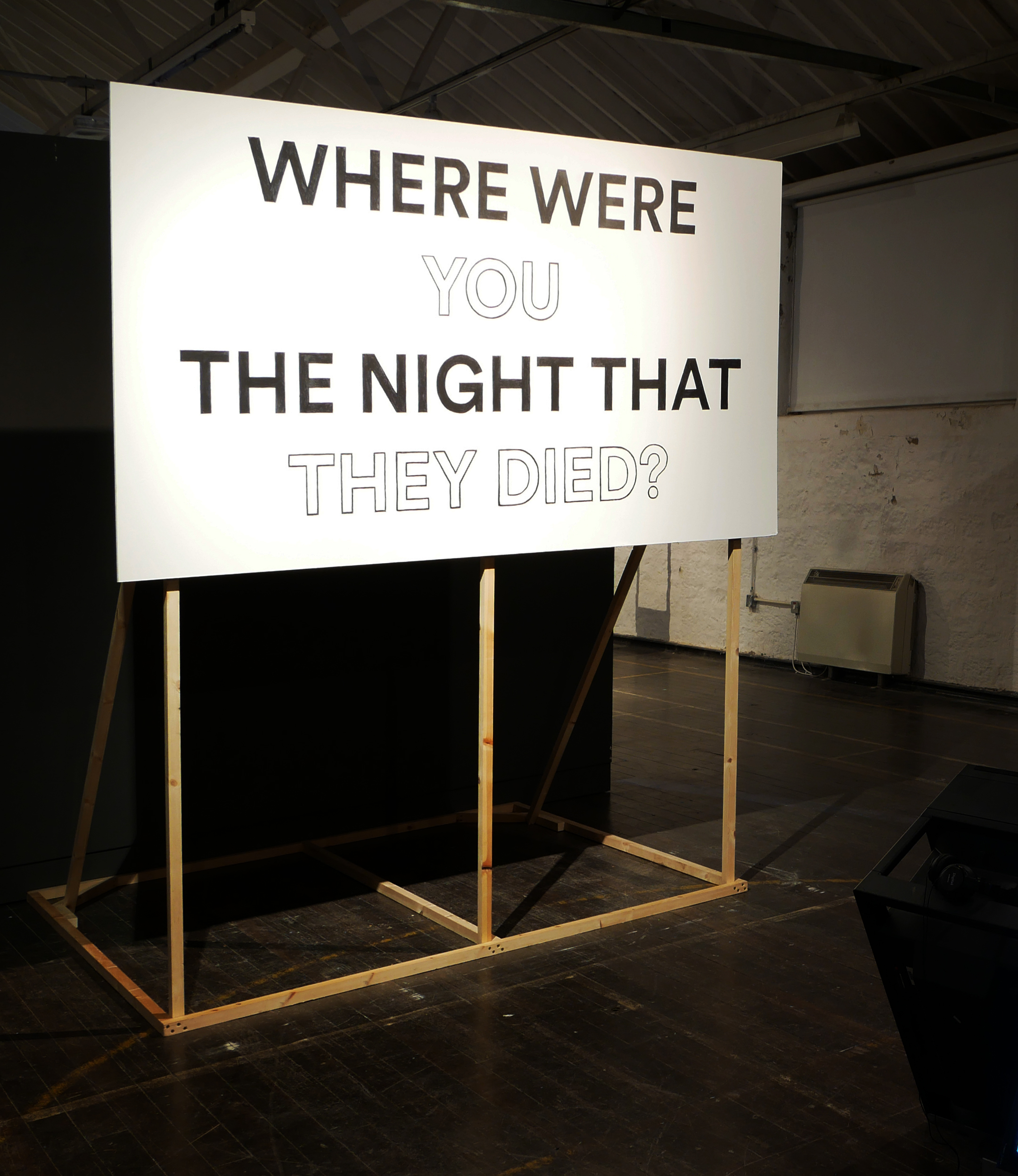Billboard with hand painted text

This work was made for an exhibition curated by Jon Cornbill and Adam Heardman at the Gymnasium gallery in Berwick-upon-Tweed, titled: First Bowie Now This. The exhibition explored the impact of what was considered at the time to be the exceptionally traumatic year of 2016, which began with the death of David Bowie and ended with the election of Donald Trump.
The exhibition’s interpretive text asked: “Did public grief over a string of celebrity deaths in fact expose a latent realisation that global capitalism had reached an intractable point in its evolution?” The assassinations of President Kennedy and Martin Luther King were moments in history that acted as registers of time and functioned as yardsticks with which cultural shifts and movements could be measured. The exhibition framed Bowie as a watershed-figure who could represent how we will remember 2016, and potentially bring us together around a shared sense of tragedy. This was significant as opportunities for experiencing collective cultural moments has dissipated over the course of the 21st Century. For example, we are no longer collectively watch the announcement of this week’s number one single on Top of the Pops. These events, whether it is hearing a favourite song for the first time or learning of the loss of a loved one, can represent important turning points in our lives. These moments can be paradigm shifts which change the way we view the world forever. Sometimes these events will feel universal, where others will be much more personal, but no less significant.
The work I made took the form of a small billboard which asked the question: “Where were you the night that they died?” The intention was to acknowledge the connections and interdependencies we share with other people in society and recognise the invisible impacts they have on our lives. Slavoj Žižek states that the true nature of events like this, and other turning points in our lives, are invisible. This is especially the case for personal moments which are not experienced by other people which can mean that they may feel unrecognised and therefore undervalued. The question the billboard posed was intended to uncover and remind the viewer of these invisible events and to recognise the lasting effects they can have on us. It also attempted to acknowledge the value of these experiences and provide the opportunity to share them with others.